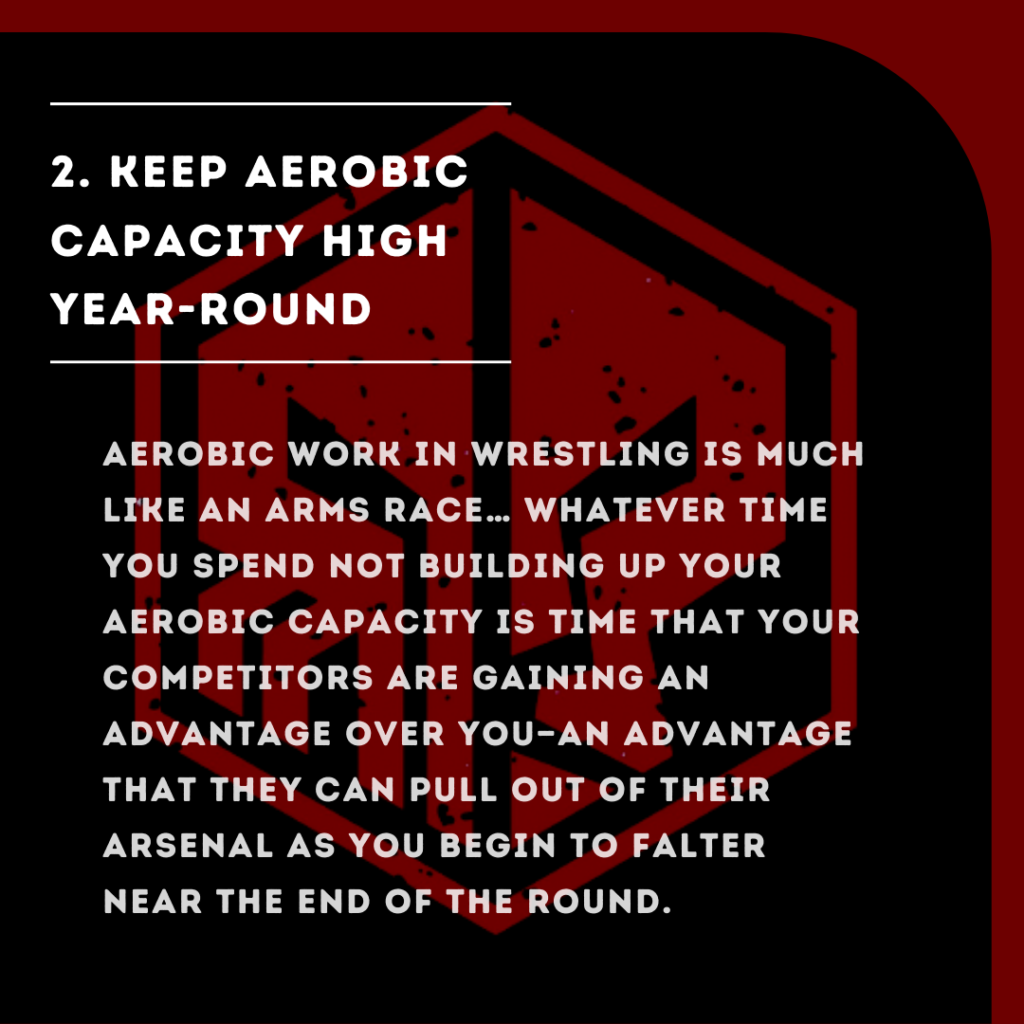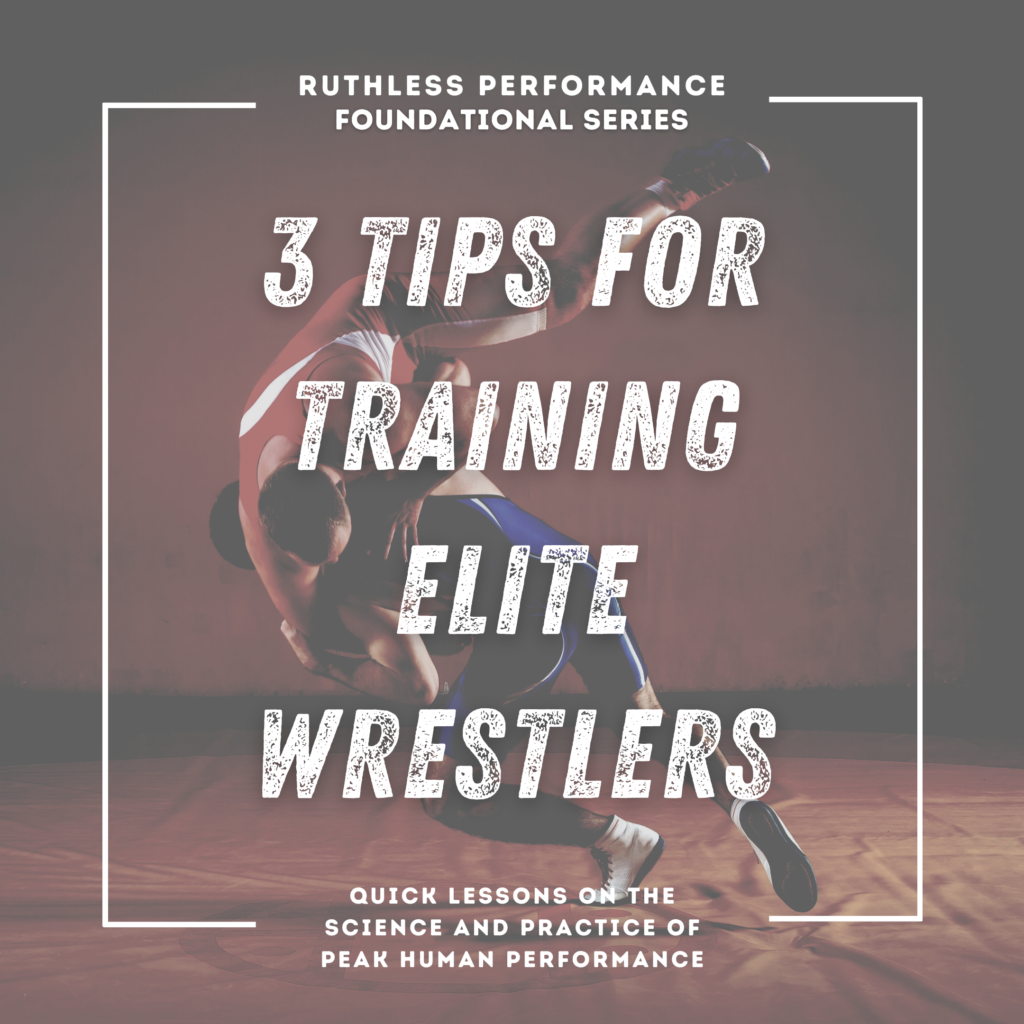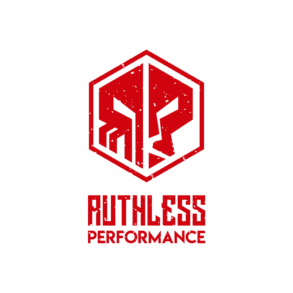Wrestlers tend to be the most underappreciate athletic group in nearly any school setting. The wrestling room is often hidden out of sight and wedged in some remote corner of a school building or college campus. This placement isn’t by accident; wrestlers and wrestling coaches rarely complain because of their stoic nature and deep understanding of what it means to have something to complain about. Things like going to bed hungry after an intense training bout to maintain weight or the intense discomfort of the last few minutes of a match can make complaints in day-to-day living seem frivolous. With our emphasis on swimming, wrestlers are also an unsung hero in our portfolio of high-level performers that we have training with us at Ruthless Performance.
In today’s post we’re going to cover some of our strategies for building out a robust strength and conditioning program to make wrestlers stronger, more injury-resilient, and generally better prepared than the competition.
3. Strengthen the Mid-Back
This tip might seem like it applies to a broad spectrum of athletes—and in many ways it does. What makes wrestlers unique is the large lats (latissimus dorsi) that come with elite wrestler status. Lats, when constricted or overdeveloped can internally rotate the shoulders leading to suboptimal performances or even shoulder pain. To avoid this, we want to strengthen what we call the ‘mid-back’, which refers to the muscles that act on the shoulder blades… Chiefly the traps and the rhomboids.
By strengthening these muscles some of the tension on the lats is counterbalanced, keeping the shoulders in a better position.
In some cases, however, the lats become so big that there is no room for them to grow except by pushing the shoulders forward. Here, we stretch the lats to ensure that they aren’t chronically restricted. This provides a better resting position so that the arms can be used in a variety of ranges and positions that a wrestler may find himself in.
2. Keep Aerobic Capacity High Year-Round

Aerobic work in wrestling is much like an arms race… Whatever time you spend not building up your aerobic capacity is time that your competitors are gaining an advantage over you—an advantage that they can pull out of their arsenal as you begin to falter near the end of the round.
A problem with most aerobic work is that the human physiology is quick to adapt to novel cardiovascular stimuli. As you begin to adapt, the aerobic strain becomes less and less. By changing your conditioning after every 2-6 weeks you prevent adaptation, and keep the strain during training high. Working hard during training means that your time on the mats can be more focused on technique work, rather than on staving off fatigue.
1. Program Low Reps to Build Strength Without Changing Weight
After all, wrestling is a sport classified by weight class. To avoid unnecessary jumps in weight, a lower rep-range will minimize added muscle while building serious strength. This runs contrary to the conventional wisdom which states that lower reps build more muscle, but this is not true.
High rep ranges actually build a greater volume of muscle through sarcoplasmic hypertrophy. This is a type of muscle growth which actually engorges the tissues around the muscle fiber to provide the muscle cells themselves with more energy.
This type of muscle growth is much more transient, but also adds on a greater volume of weight than myofibril hypertrophy.
Myofibril hypertrophy makes the muscle cells themselves bigger. This contributes to greater overall strength rather than greater overall stored energy in the muscle. This gives you greater pound-for-pound strength, making you a formidable fighter in whatever weight class you choose.
Training with Ruthless
We’ll post more of our strategies for building athletes from time to time, but if you have any questions about training with us—or strength and conditioning for athletes more generally—you can always email us at Info@RuthlessPerformance.com or by messaging us on our contact page.

